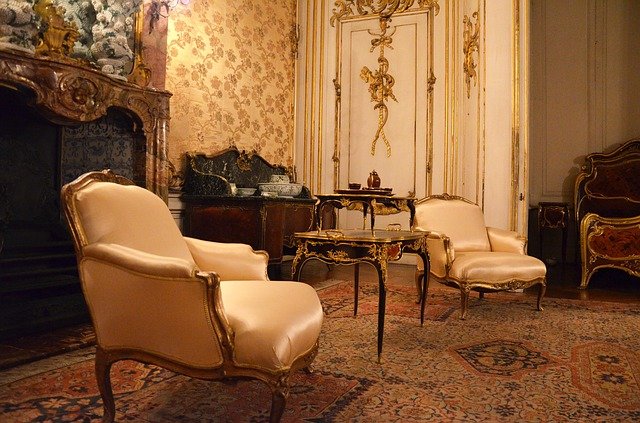
It is easy to appreciate the baroque influence in the Rococo ornamentation
The notion of rococo is used in the field of art to refer to a style . It is the baroque that was born in the 18th century in French territory, which is distinguished by its refined and exuberant decoration .
behind the name
The beginnings of Rococo are located around 1730 . However, the concept was coined several decades later, supposedly by a disciple of the painter Jacques-Louis David who would have associated the terms rocaille (the ornament made in imitation of rocks) and baroque (that is, baroque ).
In principle the connotation of rococo was pejorative . As time went by, art historians began to call this style inspired by mythology and nature , characterized by the use of light and bright tones .
Brief description
Rococo is committed to sensuality and the exotic , representing human bonds and love . Religion is not usually present in their works and developments, although there is an aspect that appears in the ornamentation of Catholic churches (the sacred rococo ).
Its theme is not very complex, although this adjective can be applied with respect to its designs, which present a great density of intricate ornaments. According to the majority opinion, Rococo is more suited to relatively small furniture and decorative objects than to sculptures and buildings.
It is not an isolated idea, since the French representatives of Rococo themselves applied it especially to the interior of homes. We can see it in the numerous porcelain figures, furniture and silverware of high society families, eager to be fashionable.
The fall of Rococo
Around the year 1760 began the end of this artistic style that, probably not known at the time, would anyway go down in history and be an important part of university academic programs. The turning point was the strong criticism issued by influential people such as Jacques-François Blondel and Voltaire about its lack of depth, which represented a movement against art itself.
According to Blondel, Rococo excessively mixed palms, reeds, plants, dragons and shells, something that disgusted him. Two decades of defamation were enough for it to go out of fashion in its country of origin and be replaced by the neoclassical style , characterized by its serious and orderly works, promoted by the painter Jacques-Louis David.
Beyond the borders of large cities, Rococo retained its popularity. The same thing happened in Italy, but when the second stage of the neoclassical period arrived, Napoleon's government imposed the so-called Empire style . Starting in 1820 and over half a century, Rococo once again awakened the interest of a part of the population.
The first country to value this style again was England, and thus began an importation of second-hand items that were sold to them by Parisians. On French soil it did not regain its popularity as strongly, although it enjoyed moderate interest thanks to the influence of the Empress Eugenia de Montijo and Ferdinand-Victor-Eugène Delacroix .

Rococo shines in furniture and interior design
In all arts
It is possible to find manifestations of Rococo in sculpture , painting , architecture , fashion and furniture design , for example. As it approached the 19th century , its popularity fell, although it later had periods of rebound.
Painters such as the Spanish Francisco de Goya and the French Jean-Baptiste Oudry ; architects such as the German Dominikus Zimmermann and the Italian Bernardo Antonio Vittone ; and sculptors such as the French Étienne-Maurice Falconet and François Gaspard Adam are historical exponents of various expressions of the Rococo style.
